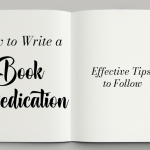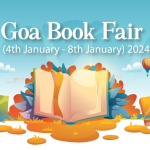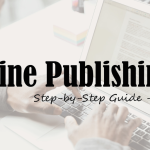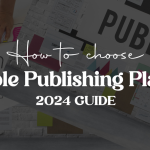Starting a book publishing journey is an exciting undertaking, but it has costs associated with it. Prospective writers frequently have to navigate a complex web of expenses, ranging from cover design and marketing to revising their manuscripts.
Read: A Complete 2024 Guide: How to Write a Book & Get it Published Globally
We will explore all aspects of publishing costs in depth in this extensive guide, illuminating the nuances that impact the financial picture of releasing a book.
Writing and Editing Costs
1.1 Manuscript Editing
Manuscript editing is an essential first step in the publishing process. Reaching this financial milestone is essential to guaranteeing that your work of literature is polished to the finest caliber. Professional editing services cover several areas of your text, such as developmental editing, which thoroughly examines the manuscript’s narrative, character development, and structure as part of its process. Copyediting delves deeply into the specifics of syntax, grammar, and general language mechanics. Its main goals are to make the material easier to read and more consistent with language usage. Proofreading involves carefully checking for spelling, grammar, and formatting mistakes to provide a polished final output. A number of variables, like the duration and complexity of your task, as well as the level of skill needed, can affect how much these services cost. Investing in expert editing ensures that your work resonates with readers and stands out in the crowded literary environment. It also improves the language and the overall structure, coherence, and impact of your narrative.
- Proofreading: This involves checking for grammar, spelling, punctuation, and basic style issues. Rates may range from $0.01 to $0.03 per word.
- Copy editing: This involves more in-depth editing for grammar, syntax, and consistency. Rates may range from $0.02 to $0.05 per word.
- Substantive/Developmental Editing: Involves restructuring and reorganising content for clarity and coherence. Rates may range from $0.04 to $0.10 per word.
- Hourly Rates: Some editors prefer to charge hourly rates, which can vary widely based on experience. Rates may range from $30 to $100 or more per hour.
- Flat Fees: Some editors charge a flat fee based on the entire project. This could range from a few hundred to several thousand dollars, depending on the complexity and length of the manuscript.
It’s important to note that these are general estimates, and rates can vary. Always discuss your specific needs with the editor and ask for a detailed quote based on the scope of the work. Additionally, consider asking for sample edits or references to gauge the editor’s skills and suitability for your project.
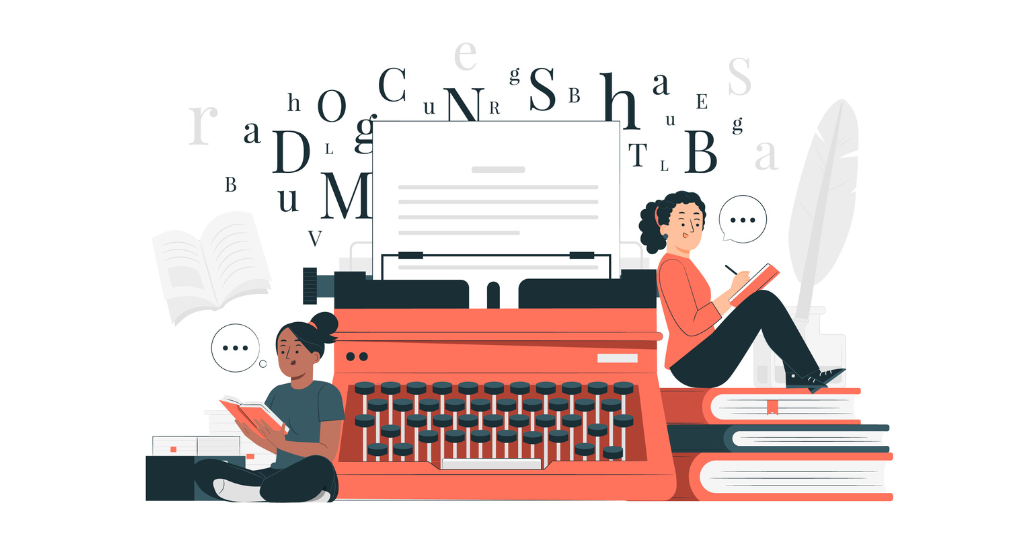
1.2 Beta Readers and Feedback
Many authors intelligently use beta readers to get early feedback on their work before diving into the world of professional editing. Although there is no up-front financial expense, the procedure necessitates a significant time and effort commitment. Beta readers offer a new viewpoint on your book and are frequently made up of aspiring readers or other writers.
Their comments are helpful in pointing out plot gaps, weak points, and locations that need further explanation. It is essential to complete this phase in order to polish your work before hiring an editor. The combined feedback that you receive from beta readers helps to strengthen your work overall, making it more durable and engaging as it moves forward through the following phases of the publication process.
The rates for beta-reading a manuscript can vary widely depending on several factors, including the length of the manuscript, the experience and reputation of the beta-reader, and the specific services offered. As per current market rates, typical rates for beta reading could range from $0.001 to $0.005 per word or a flat fee per manuscript.
Experienced and specialised beta readers may charge higher rates. Additionally, some beta readers may offer different levels of service, such as providing detailed feedback, editing suggestions, or a general overall impression.
Design and Formatting Costs
2.1 Book Cover Design
As much as we like to say, “Don’t judge a book by its cover,” the publishing industry actually operates on the exact opposite principle. One important factor that significantly affects a reader’s decision to pick up a book is the book cover. A professional cover designer is essential to creating visually appealing covers; their fees vary depending on experience and design intricacy. Putting money into a visually appealing book cover is a calculated decision that will pique interest from prospective customers, effectively communicate the content of the work, and leave a lasting impact on the crowded shelves of brick-and-mortar and online retailers.
The market rate for book cover design can vary widely depending on several factors, including the designer’s experience, the complexity of the design, and the specific requirements of the project.
- Entry-Level Designers:
- Beginners or less experienced designers may charge anywhere from $50 to $200 for a book cover.
- Intermediate-Level Designers:
- Designers with moderate experience may charge between $200 and $500 for a book cover.
- Experienced Designers:
- Experienced and professional designers with a strong portfolio may charge anywhere from $500 to $1,500 or more.
- Specialised Designers:
- Specialised or renowned book cover designers may charge higher rates, ranging from $1,500 to several thousand dollars.
- Additional Services:
- Some designers may offer additional services such as concept development, multiple revisions, or custom illustrations, which can affect the overall cost.

2.2 Interior Layout and Formatting
A book’s professionalism is greatly enhanced by its internal layout and formatting, even though its cover is what draws readers in. The interior of the book will be aesthetically pleasing, well-organized, and compliant with the technical requirements for print and digital distribution if a professional formatter is hired. A well-formatted book improves the reading experience by increasing readers’ enjoyment and accessibility. Proper formatting guarantees that the book follows industry guidelines, which goes beyond appearance and makes it easier to go from a rough draft to a polished, publishable product—whether it’s in print or digital format.
The market rates for formatting and beautification services can vary widely depending on factors such as the complexity of the task, the extent of design work involved, the expertise of the service provider, and the specific requirements of the client.
- Basic Formatting:
- Simple document formatting: $5–$20 per page.
- Basic resume formatting: $20–50 per resume.
- Graphic Design and Beautification:
- Brochure or flyer design: $50–$500 per design.
- Presentation design: $20–$200 per slide.
- Logo design: $100-$1,000 or more.
- Website Design:
- Simple website design: $500–$5,000.
- Advanced website with customisation: $5,000–$20,000 and beyond.
- Book Formatting:
- E-book formatting: $50–$500.
- Print book formatting: $100-$1,000 or more.
- Social media graphics:
- Social media post design: $10–50 per post.
- Social media profile/banner design: $50-$200 per design
It’s essential to discuss your specific needs with potential service providers to get accurate quotes based on your project requirements. Additionally, market rates can be influenced by geographic location, the reputation of the service provider, and the level of customization required.
Publishing Platform Costs
3.1 Traditional Publishing
The financial environment of self-publishing is very different from that of authors who hope to seek traditional publishing. The traditional publishing house bears the majority of the expenditures under the publishing paradigm. This covers costs for marketing, distribution, printing, cover design, and editing. Conventional publishers make a financial commitment to the author’s work, paying for the publishing and distribution rights in return. But getting published traditionally is a notoriously difficult process. The submission of manuscripts, agent queries, and editorial reviews are all part of the sometimes-tough process. Securing a traditional publishing agreement is a tough endeavor, and acceptance rates are rather low. In exchange for a longer publishing timeframe and less control over some aspects of the process, authors who successfully traverse this road can access the knowledge and resources of well-established publishing houses.
- Advance Payment: Traditional publishers often provide authors with an advance payment against future royalties. The amount of the advance can vary significantly and may range from a few thousand dollars to several million, especially for well-known authors.
- Royalties: Authors typically receive royalties on book sales once the advance has been earned out. Royalty rates are usually a percentage of the book’s cover price, typically ranging from 8% to 15%, with variations based on the format (hardcover, paperback) and sales volume.
- Genre Impact: Different genres may have different market rates. For instance, advances and royalties for fiction and non-fiction books can vary.
- Negotiation: Established authors with a track record of successful books may have more negotiating power and can command higher advances and better terms.
- Rights: Traditional publishing contracts may involve various rights, such as print, ebook, audiobook, and foreign rights. The compensation structure for each of these rights can differ.
- Agent Fees: Authors with literary agents typically pay a commission (usually 15%) to their agents on advances and royalties. Agents negot iate on behalf of the author to secure the best possible deal.
It’s important for authors to carefully review any publishing contract and, if possible, seek professional advice, especially from a literary agent or legal counsel, to ensure they are getting a fair deal. Market rates can change over time, so staying informed about industry standards is crucial for authors navigating traditional publishing.

3.2 Self-Publishing
As an alternative, self-publishing offers writers a more direct and independent way to distribute their writing. Although it gives authors more discretion, it has additional expenses that they need to take into account. Purchasing International Standard Book Numbers (ISBNs), which are distinctive identifiers essential for distribution and cataloging, is one major price. In addition, authors have the option—and expense—of registering their works for copyright protection. Costs are also introduced by the self-publishing platform of choice. Costs for services like book listing, printing, and distribution may apply to well-known platforms like Amazon Kindle Direct Publishing (KDP) and IngramSpark. Even though these expenses are real, the benefit is that the writer keeps creative control, gets to decide on price, and designs the overall plan for their work.
The costs associated with self-publishing can vary widely, depending on various factors and the choices you make in the publishing process. Here are some common expenses associated with self-publishing:
- Editing: Hiring a professional editor to review and edit your manuscript is essential. Editing rates vary based on the level of editing required (developmental, copy editing, proofreading).
- Book Cover Design: A professionally designed book cover is crucial for attracting readers. You may choose to hire a graphic designer for this, and costs can vary.
- Formatting/Layout: Proper formatting ensures your book looks good in print and digital formats. You may hire a professional formatter or use self-publishing platforms that offer formatting tools.
- ISBN (International Standard Book Number): If you want to sell your book through various channels, you might need an ISBN. Some platforms provide free ISBNs, or you can purchase one.
- Printing Costs: If you plan to have physical copies of your book, you’ll need to consider printing costs. Print-on-demand services can be cost-effective as they only print copies when a customer orders them.
- Distribution: Uploading your book to self-publishing platforms like Amazon, Kindle Direct Publishing (KDP), or others is generally free. However, some services may offer expanded distribution options for a fee.
- Marketing and Promotion: While not a direct publishing cost, marketing is crucial for getting your book noticed. You might spend money on promotional activities, book launches, or advertising.
- Author Website: Building a website to promote your book and connect with readers may involve domain registration and hosting fees.
When choosing to self-publish, authors should have a clear plan in place to handle the intricacies and a thorough awareness of the expenditures involved. Self-publishing gives writers the freedom to realize their vision on their own terms, but it also necessitates proactive planning to make sure the investment is in line with the book’s success in the cutthroat literary market and overall objectives. Ultimately, authors have to balance their goals and desired level of control over the publication process against the financial implications of either self-publishing or traditional publishing.
Printing and Distribution Costs
4.1 Printing
When writers decide to print hard copies of their books, printing expenses play a big part in their total cost of ownership. Numerous factors affect the cost per unit, such as the quantity of copies requested, the printing method of choice, and the type of paper chosen. The ultimate cost of printing is determined by the caliber of the print job, the cover materials, and any extra features, including custom finishes. The need for high-quality print must be carefully weighed against the financial factors, and authors must make sure that the whole cost fits within their budget and returns on investment expectations.

4.2 Distribution
Costs associated with distribution come into play, especially for self-published authors hoping to reach a readership. Print-on-demand services offered by platforms such as Amazon Kindle Direct Publishing (KDP) have completely changed the way that books are distributed. As a result, writers no longer need to make significant upfront printing quantity investments.
But authors also have to consider things like merchant commissions and distribution fees. Although print-on-demand is convenient and economical, it is crucial to comprehend platform pricing structures and commission rates to make sure the author’s financial objectives are met by the distribution plan as a whole. Authors can make well-informed decisions on pricing, royalties, and the overall financial sustainability of their physical book distribution by accounting for these distribution costs.
Printing and distribution market rates can vary greatly depending on a variety of criteria, including printing type (e.g., digital versus offset), quantity, quality, distribution channels, and geographical location. Furthermore, the unique needs of your project will affect the final cost.
To obtain realistic market pricing, call local printing and distribution companies, supply them with project specifications, and request a quote. Consider the size and kind of printed documents, the amount required, printing quality, and distribution strategies.
Comparing quotes from multiple printing and distribution services will help you determine the average market rate and choose the option that best fits your budget and requirements. Keep in mind that prices may vary based on your location and the specific services offered by each provider.
Marketing and Promotion Costs
5.1 Book Marketing
A book’s intended audience must be reached, which is why book marketing is such an essential part of the publishing process. Although it provides chances for natural expansion, authors frequently have to pay to increase exposure and interaction. One common tactic in social media advertising is to pay for targeted advertisements that are meant to reach particular groups of people. Book launch events, whether in person or virtually, may include additional expenses for catering, venue rental, and marketing supplies. To leave a lasting impression, authors might also spend money on promotional items like bookmarks, posters, or book swag. The cost of implementing these tactics is an investment in the book’s success because successful marketing increases the book’s discoverability and appeals to potential customers.

5.2 Professional Reviews
Getting expert evaluations from reliable sources is a great way to raise a book’s profile and give it more legitimacy. While some review sites might provide reviews for free, others can charge for assured or accelerated reviews. These costs go into the overall marketing budget, but they also have a big influence on how a book is regarded by critics and readers. Expert reviews offer reliable assessments to prospective customers, impacting their purchasing choices and proving the book’s worth in the marketplace. It is important for authors to carefully consider the advantages and disadvantages of investing in expert reviews, keeping in mind that this is one part of a larger strategy to build a strong and favorable narrative around their work.
Miscellaneous Costs
6.1 Author Website
Building a strong online presence with an author website is essential in the digital era to engage readers and promote your writing. Although author websites are relatively inexpensive, they are necessary to establish a credible and easily accessible platform. Securing a distinctive web address is part of the domain registration process, and hosting is the service that allows your website to be accessed online. These are ongoing costs that help shape the author’s online persona. Additionally, using a web designer may result in increased expenses for anyone looking to create a polished and readable website. A well-designed website not only raises the author’s profile but also serves as a central location for readers to peruse their writings, discover when new ones are coming out, and interact with the author.
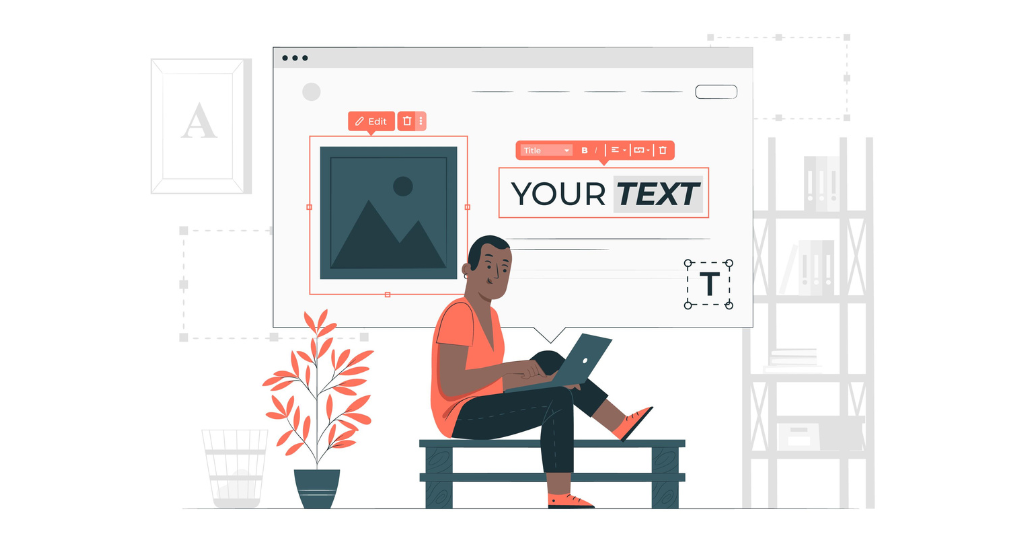
6.2 Author Events and Travel
When writers actively interact with readers at conferences, book signings, or author presentations, travel and lodging costs should be factored into the overall budget. Although these gatherings offer priceless chances to interact with readers and other writers, the expenses involved can differ. The authors need to account for lodging fees for the duration of the event as well as transportation costs, whether by car, train, or airplane. It’s critical to weigh the advantages of greater reader involvement and visibility against the related expenses. Author events give a personal touch and let readers interact with the writer behind the words, but writers must carefully balance these monetary factors to make sure the investment fits with their overall objectives and the possible rewards of reaching a wider audience.
Read: What Is Biblical Fiction? Complete Guide For New coming Authors
Authors must comprehend the associated costs in order to successfully navigate the complex world of publication. Even if the costs can differ greatly depending on the decisions and objectives, a well-informed strategy makes sure that money worries don’t get in the way of realizing a literary work.
With the right information, authors may increase their chances of success in the ever-changing book publishing industry by making well-informed decisions and carefully allocating their resources, regardless of whether they choose traditional publication or the independence of self-publishing.
Publish your book with BlueRoseONE and become a bestselling author. Don’t let your dream of becoming an author fade away, grab the opportunity now and publish your book – be it fiction, non fiction, poetry or more.









